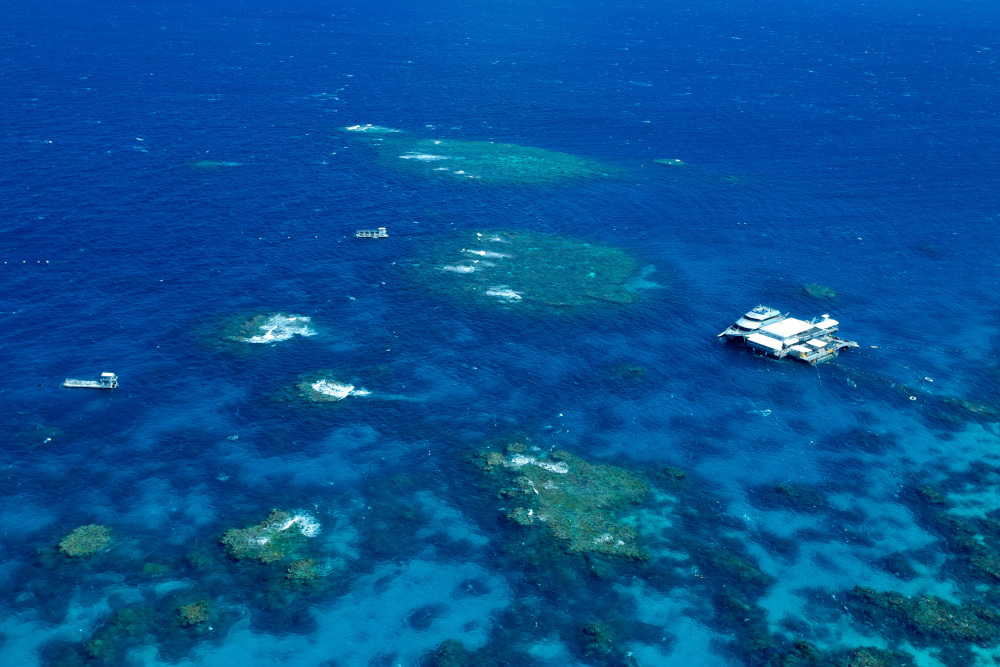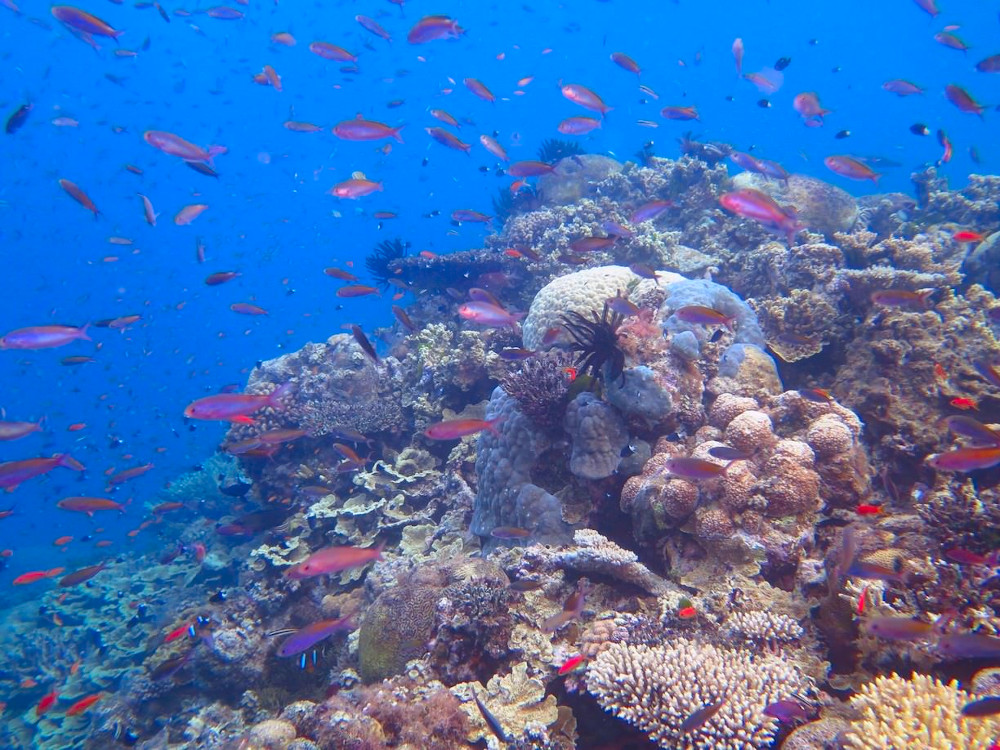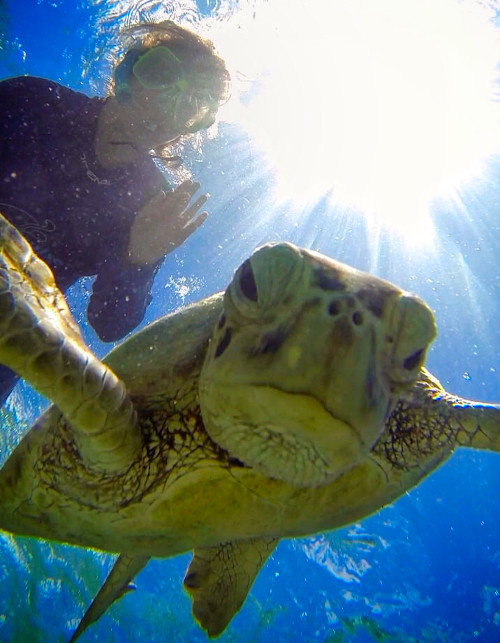Things to Know Before Going to the Great Barrier Reef for the First Time
Australia’s Great Barrier Reef is one of the world’s greatest wonders and a bucket-list destination for diving holidays and outdoor adventure. The living ecosystem is stunningly beautiful and filled with some of the most unique marine wildlife you’ll ever see, but there are some things to know before you visit. Here are some travel tips for travelling to and around the Great Barrier Reef and helpful advice to make the most of the trip.
Where to go
The Great Barrier Reef is the largest living organism on the planet, and it travels quite a distance along the coast of 5 regions in Australia. You could travel to Tropical North Queensland, an unspoilt area that’s ideal for marine adventure, or Cairns and Port Douglas, an area with an array of marine tours and the lush Daintree Rainforest. There’s also Townsville, a location in the centre of the reef’s coastline that boasts shipwrecks for diving, and the Whitsundays, a collection of islands that are popular for both outdoor adventure tours and beach retreats.

How to get there
With so many access points to the Great Barrier Reef, it’s easy to find flights and other transport there. All of Australia’s capital cities offer direct and connecting flights into airports in Hamilton Island, Townsville, Proserpine and Cairns. If you’re planning to travel to the Whitsundays for your reef experience, you can access the islands via Airlie Beach, which is a short bus ride from the Proserpine Airport.
When to go
Australia has 4 distinct seasons, but there’s no bad time to visit. The Great Barrier Reef has dry and wet seasons, but it’s a travel destination that can be enjoyed throughout the year. May to October is when the dry season occurs and provides warmer ocean temperatures along with very little rainfall, though you could easily enjoy the reef with the balmy temperatures and rainfall during the wet season from November to April. You may even witness a fascinating electrical storm during tropical rainfall, which is an experience in itself.

What to pack
When you’re going to the Great Barrier Reef, much of the equipment you’ll need will be supplied by a tour company or is available for hire. Beyond specialized equipment like dive gear and snorkelling equipment, you’re essentially packing for a beach trip. Keep in mind that the Australian sun is hot, so be sure to bring plenty of powerful biodegradable sunscreen to avoid getting a sunburn and to protect sea life. You should also bring sunglasses, sun hats, sleeved shirts and other protective clothing to protect yourself from sunburn.
Be aware of wildlife
The Great Barrier Reef is home to an incredibly diverse mix of wildlife species, but you’ll wish you knew which pose a safety risk. Both saltwater and freshwater crocodiles are native to Australia, though saltwater crocodiles are more likely to pose a threat. While you’re unlikely to encounter these animals in the reef itself, they do take shelter on the beach and in the shallows, so it’s vital to anticipate them and stay aware of your surroundings while entering and exiting the water.

Watch for marine stingers
Nature and animal lovers are attracted to the reef’s abundance of wildlife, such as humpback whales, sharks, bottlenose dolphins, sea turtles and more. Fortunately, most of the sharks that inhabit the reef pose little danger to humans. Stingrays and box jellyfish are the main concern since these animals can cause lethal encounters. November to May is generally when the stinger season lasts as those months experience the highest temperatures, so it’s important to exercise caution, learn what to know to protect yourself and wear a specialized stinger suit.
What to know about coral bleaching
The Great Barrier Reef has been affected by environmental changes in recent years, leading to significant damage in areas and strong conservation efforts. Warm sea temperatures lead the coral to become heat stressed, which kills the beneficial algae that cover it. This causes the coral to starve. When you’re exploring the reef, you may see the effects of coral bleaching in different areas, particularly in the northern part of the reef where the water is warmer.
Treat the reef with respect
The reef is a fragile ecosystem and living thing that is impacted not only by pollution and climate change but also tourism and human interaction. While you’re exploring the reef, be sure to avoid touching the reef and coral in any way, which can lead to damage to the living organisms. Even something as simple as brushing your fins up against the reef can cause damage. Also, avoid touching any of the marine animals you see, such as manta rays and turtles, which may become stressed from interactions with humans.
Plan a tour
If it’s your first time visiting the reef, an organized tour is a great way to ensure you have a fulfilling and safe time. Many tour companies offer adventures like glass-bottomed boat tours, diving tours and instruction, snorkelling tours, scenic helicopter flights, sailing and more, along with travel tips. Be sure to do your research to know before you go and ensure you book the adventures that matter most to you, so you can experience all the reef has to offer with an experienced guide.
Help conservationists save the reef
While you’re sightseeing and enjoying the wonders of the reef, you can also do your part to help it. There are several programs you can get involved in, such as Eye on the Reef, which allows you to submit photographs of the wildlife and pollution during your snorkelling and diving adventures. You could also take photos of manta rays while you swim and submit them to Project Manta, which gives researchers more information about how these animals behave in the wild.
Plan your trip
If you’re considering a trip to the Great Barrier Reef, these tips and essential information should help you learn all you need to know before you go. When you’re ready, visit Expedia to check out Great Barrier Reef hotels and get ready for the adventure of a lifetime in one of the world’s greatest natural treasures.
More Articles With Australia
Discover our travel trends for the year ahead Expedia Travellers are ready to enjoy the hustle and bustle of cities and experience urban vibes. Crowded pubs, open-air markets and dazzling lights await holiday makers, ready to be at the heart of culture and action. Wotif The energy and investment being fueled into Australia’s major cities… Continue reading The No-Normal: Unexpected travel trends in 2023
At a time where Aussies are usually heading to Europe or warmer places abroad, the question bids: Where do or can we go now? To help Aussies fulfill their overseas dreams without having to leave the country, Expedia has uncovered the top domestic swaps for international favourites. Offering the same, if not better experiences, here… Continue reading Domestic getaways that feel like a world away
As Australia goes through different phases of recovery, and as the COVID-19 pandemic continues to leave traces of uncertainty, Aussies are starting to scratch that travel itch, from dreaming, to planning, to actually packing their bags and sneaking in a quick (and safe) getaway. Expedia data reveals the appetite for travel continues to rise, with… Continue reading How You Can Help Australia Get Back On Its Feet
Find out how to spend a weekend in Gold Coast to make the most of your fun coastal retreat.
Find tips and advice for visiting the Great Barrier Reef for the first time, such as when to go and what to bring.